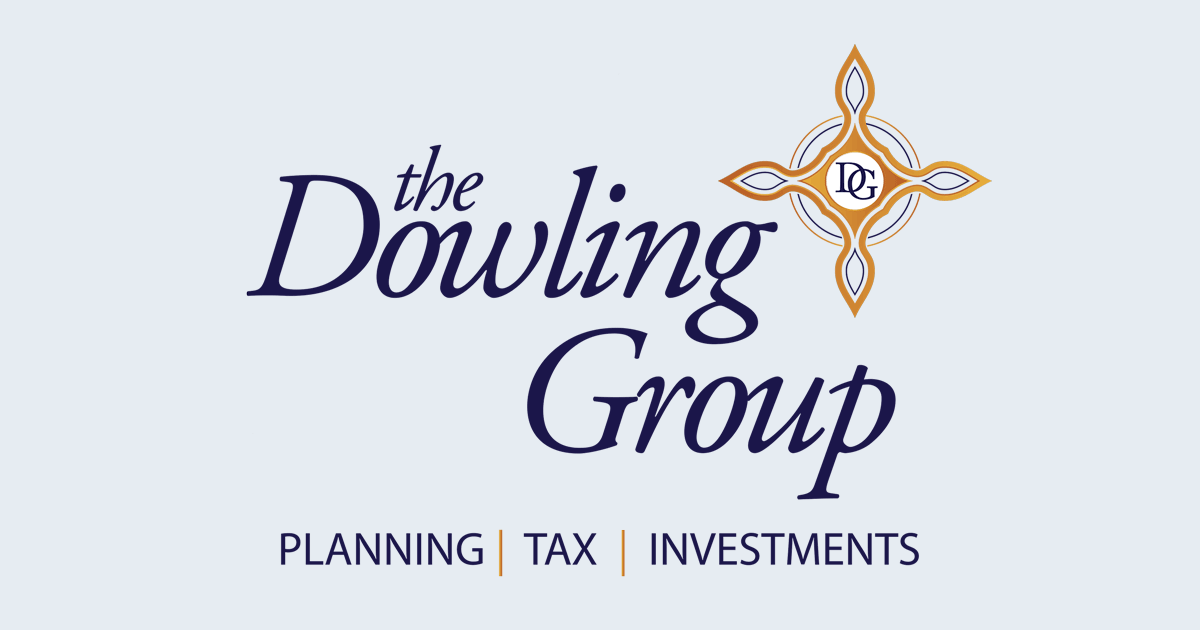
TDG News: Welcome, Abigail!

We’re delighted to announce the arrival of baby Abigail! Katie and her husband Jack welcomed Abigail Rhodes McGroarty to the world on January 5th. At birth she weighed 7 pounds, 9 ounces and measured 19¼ inches. Mama Katie is over the moon with happiness and is completely in love with her little girl. Please come together with us as we congratulate Katie and Jack!
The Markets
Last week, the January 2024 Challenger Report found that employers based in the United States cut more than 82,000 jobs in January. That’s a lot. In December 2023, about 35,000 layoffs were announced. The January job cuts were concentrated in a few industries, and the reasons for the cuts included companies restructuring to lower costs and reorienting toward artificial intelligence.
Layoffs often are a sign the economy is losing steam, but that doesn’t appear to have been the case in January since employers added more than 353,000 new jobs during the month, reported the Bureau of Labor Statistics (BLS).
If we subtract the number of layoffs from the number of new jobs (353,000 – 82,000 = 271,000), the total number of jobs created in January was still significantly higher than the 185,000 new jobs economists anticipated.
Overall, the U.S. unemployment rate remained at 3.7%, although there were differences by gender and race:
- Women (over age 20): 3.2%
- Men (over age 20): 3.6%
- Asian: 2.9%
- White: 3.4%
- Hispanic/Latino: 5.0%
- Black: 5.3%
The BLS reported that wages moved higher in January. Average hourly earnings increased 4.5% over the 12 months through January 2024. If inflation continues to slow – it was 3.4% in December – that could be good news for consumers. However, the fight against rising prices continues. Katia Dmitrieva of Bloomberg explained:
“The [employment] report clearly shows that demand [for workers] and wage pressures are far from cooling. That is consequential for the Federal Reserve, which has been signaling that the strength in the labor market shows inflationary pressures are still in the system, and that’s something policymakers will keep in mind before pivoting to rate cuts.”
After falling for much of the week, U.S. Treasury yields rose after strong jobs data dashed hopes the Federal Reserve would cut rates sooner rather than later. Stock investors remained confident despite the possibility that rates would remain higher for longer, and major U.S. stock indices finished the week higher.
| Data as of 2/2/24 | 1-Week | Y-T-D | 1-Year | 3-Year | 5-Year | 10-Year |
|---|---|---|---|---|---|---|
| Standard & Poor's 500 Index | 1.4% | 4.0% | 18.6% | 9.0% | 12.7% | 11.0% |
| Dow Jones Global ex-U.S. Index | 0.1 | -1.5 | 1.5 | -2.4 | 2.8 | 2.0 |
| 10-year Treasury Note (yield only) | 4.0 | N/A | 3.4 | 1.1 | 2.7 | 2.6 |
| Gold (per ounce) | 0.8 | -2.1 | 5.9 | 3.5 | 9.2 | 4.9 |
| Bloomberg Commodity Index | -2.1 | -2.0 | -11.6 | 6.0 | 3.6 | -2.6 |
S&P 500, Dow Jones Global ex-US, Gold, Bloomberg Commodity Index returns exclude reinvested dividends (gold does not pay a dividend) and the three-, five-, and 10-year returns are annualized; and the 10-year Treasury Note is simply the yield at the close of the day on each of the historical time periods.
Sources: Yahoo! Finance, MarketWatch, djindexes.com, London Bullion Market Association.
Past performance is no guarantee of future results. Indices are unmanaged and cannot be invested into directly. N/A means not applicable.
How Big Is the National Debt?
Last year, the U.S. economy produced about $27.9 trillion worth of goods and services. At the end of 2023, the U.S. national debt was about $33.2 trillion.
So, America’s debt is currently bigger than its economy.
The U.S. national debt has accumulated over decades. Each year the government spends more than it receives, the debt grows. When the government spends less than receives, the debt shrinks. Over the last 50 or so years, the government has taken in more than it spent only five times. The last time was 2001.
The debt generally falls into two categories:
Debt held by the public amounted to about $26.9 trillion in 2023. It includes U.S. Treasury securities that have been sold to investors. Economists generally consider this to be “the most meaningful measure of debt, because it reflects the amount that the Treasury has borrowed from outside lenders through financial markets to support government activities,” reported the Peter G. Peterson Foundation.
Debt the government owes itself, which amounted to about $7.1 trillion in 2023. This is the money the U.S. government owes to itself. For example, when Social Security, Medicare, and other national government programs take in more than they need. The extra is invested in U.S. Treasuries that are held in the program’s trust funds.
We’re not alone. The level of government debt has grown around the world. The Institute of International Finance forecasts that global debt would total $310 trillion for 2023, reported Sam Meredith of CNBC.
How Do We Finance the Debt?
The U.S. government finances its debt by selling securities such as Treasury bills, notes, bonds. When the debt grows or interest rates rise, the cost of interest increases. As a result, less money may be available for programs that support economic growth, education, Social Security, and other programs.
Higher debt can lead to slower economic growth. “A study by the World Bank found that countries whose debt-to-GDP ratios exceed 77% for prolonged periods experience significant slowdowns in economic growth,” reported Will Kenton of Investopedia. Since the U.S. economy and the U.S. stock market tend to be highly correlated, market returns might slow, too.
Some economists point out that higher rates can stimulate economic growth because they put more money in the hands of consumers, and consumers tend to be the driving force behind the U.S. economy. “…People who are holding government bonds, paying higher rates of interest, are getting a huge windfall in the form of interest income and that income can be spent just like any other form of income,” explained a source cited by Charlotte Morabito of CNBC.
How Much Is Too Much?
Economists are uncertain how much debt is too much debt for developed nations to hold. Last year, though, researchers at Penn Wharton of the University of Pennsylvania suggested that 200% of gross domestic product (GDP) would be the limit for the United States. In 2023, U.S. debt-to-GDP ratio was 123%.
Weekly Focus – Think About It
“The price of greatness is responsibility.”
—Winston Churchill, statesman
Wishing you and your families well,
Sean M. Dowling, CFP, EA
President, The Dowling Group Wealth Management
Please feel free to forward this commentary to family, friends, or colleagues. If you would like us to add them to the list, please reply to this e-mail with their e-mail address and we will ask for their permission to be added.
- Government bonds and Treasury Bills are guaranteed by the U.S. government as to the timely payment of principal and interest and, if held to maturity, offer a fixed rate of return and fixed principal value. However, the value of fund shares is not guaranteed and will fluctuate.
- Corporate bonds are considered higher risk than government bonds but normally offer a higher yield and are subject to market, interest rate and credit risk as well as additional risks based on the quality of issuer coupon rate, price, yield, maturity, and redemption features.
- The Standard & Poor's 500 (S&P 500) is an unmanaged group of securities considered to be representative of the stock market in general. You cannot invest directly in this index.
- All indexes referenced are unmanaged. Unmanaged index returns do not reflect fees, expenses, or sales charges. Index performance is not indicative of the performance of any investment.
- The Dow Jones Global ex-U.S. Index covers approximately 95% of the market capitalization of the 45 developed and emerging countries included in the Index.
- The 10-year Treasury Note represents debt owed by the United States Treasury to the public. Since the U.S. Government is seen as a risk-free borrower, investors use the 10-year Treasury Note as a benchmark for the long-term bond market.
- Gold represents the afternoon gold price as reported by the London Bullion Market Association. The gold price is set twice daily by the London Gold Fixing Company at 10:30 and 15:00 and is expressed in U.S. dollars per fine troy ounce.
- The Bloomberg Commodity Index is designed to be a highly liquid and diversified benchmark for the commodity futures market. The Index is composed of futures contracts on 19 physical commodities and was launched on July 14, 1998.
- The DJ Equity All REIT Total Return Index measures the total return performance of the equity subcategory of the Real Estate Investment Trust (REIT) industry as calculated by Dow Jones.
- International investing involves special risks such as currency fluctuation and political instability and may not be suitable for all investors. These risks are often heightened for investments in emerging markets.
- Yahoo! Finance is the source for any reference to the performance of an index between two specific periods.
- Opinions expressed are subject to change without notice and are not intended as investment advice or to predict future performance.
- Economic forecasts set forth may not develop as predicted and there can be no guarantee that strategies promoted will be successful.
- Past performance does not guarantee future results. Investing involves risk, including loss of principal.
- You cannot invest directly in an index.
- Stock investing involves risk including loss of principal.
- The opinions voiced in this material are for general information only and are not intended to provide specific advice or recommendations for any individual. All performance referenced is historical and is no guarantee of future results. All indices are unmanaged and may not be invested into directly. Economic forecasts set forth may not develop as predicted and are subject to change. Investing involves risk including loss of principal.
- The Price-to-Earning (P/E) ratio is a measure of the price paid for a share relative to the annual net income or profit earned by the firm per share. It is a financial ratio used for valuation: a higher P/E ratio means investors are paying more for each unit of net income, thus, the stock is more expensive compared to one with a lower P/E ratio.
- These views are those of Carson Group Coaching, and not the presenting Representative or the Representative’s Broker/Dealer, and should not be construed as investment advice.
- This newsletter was prepared by Carson Group Coaching. Carson Group Coaching is not affiliated with the named broker/dealer.
- The foregoing information has been obtained from sources considered to be reliable, but we do not guarantee it is accurate or complete.
- Consult your financial professional before making any investment decision.
Sources:
https://www.bls.gov/news.release/empsit.nr0.htm
https://www.bls.gov/news.release/cpi.nr0.htm
https://www.bloomberg.com/news/articles/2024-02-02/us-jobs-report-january-2024-5-takeaways-from-payrolls-unemployment (or go to https://resources.carsongroup.com/hubfs/WMC-Source/2024/02-05-24_Bloomberg_Key%20Takeaways%20From%20the%20US%20Jobs%20Report%20for%20Jan_5.pdf)
https://www.barrons.com/market-data?mod=BOL_TOPNAV (or go to https://resources.carsongroup.com/hubfs/WMC-Source/2024/02-05-24_Barrons_Data_6.pdf)
https://www.bea.gov/sites/default/files/2024-01/gdp4q23-adv.pdf
https://fiscaldata.treasury.gov/americas-finance-guide/national-debt/
https://fiscaldata.treasury.gov/americas-finance-guide/national-deficit/
https://www.cnbc.com/2024/01/16/davos-banking-group-iif-sounds-the-alarm-on-record-global-debt.html
https://www.investopedia.com/terms/d/debtgdpratio.asp
https://blogs.cfainstitute.org/investor/2023/03/17/myth-busting-the-economy-drives-the-stock-market/
https://www.cnbc.com/2023/09/10/why-the-national-debt-can-both-help-and-hurt-the-us-economy.html
https://www.brainyquote.com/quotes/winston_churchill_101477
ADV & Investment Objectives: Please contact The Dowling Group if there are any changes in your financial situation or investment objectives, or if you wish to impose, add or modify any reasonable restrictions to the management of your account. Our current disclosure statement is set forth on Part II of Form ADV and is available for your review upon request.
It's a busy world. Our newsletter helps keep you tuned in to major market events, money-saving opportunities, filing deadlines, and other important information. One email per week and no spam — promise.
Subscribe